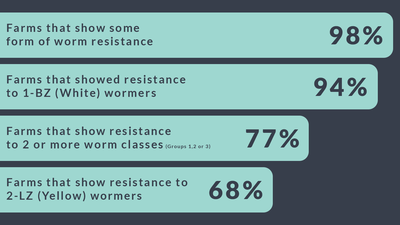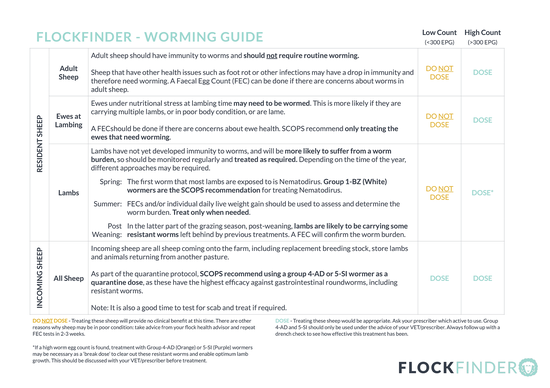Data shows that lamb growth rates can be reduced by up to 50% 📉 due to worm burden, with no immediately visible sign that the lambs are unhealthy.
Controlling worms has therefore become an essential part of modern farming with the industry becoming increasingly dependent on anthelmintics. However, worm resistance is increasing, is irreversible, and threatens all farms in the UK.
Worm resistance is an invisible problem, only becoming visible when it's too late.
Research from Wales Against Anthelmintic Resistance Development (WAARD) has shown that:

However, despite this, 86% of farmers thought their wormers were working, primarily based on the look and condition of the sheep.
Do my sheep have worms 🤷♂️?
Most flocks have worms with weight-loss and poor growth rates being typical signs of worm presence, however, worm burden can often present no visible signs that the lambs are unhealthy.
Fortunately, the presence (and quantity) of worms can be confirmed by a simple Faecal Egg Count (FEC). These tests are affordable (~£8-10/test), readily available, and provide a reliable result.
It is important to use FECs to check ewes and lambs worm status, and drench only if required. It is recommended toconduct FECs every 3-4 weeks throughout the grazing season, to keep on top of the worming needs for your flock and identify the optimal time for treatment. TEST, DON'T GUESS.
FECs can also be used to determine if a given group/class of wormer is working and whether there is an increase in worm resistance. This is also known as drench-testing.
The aim is to use anthelmintics less often with maximum impact on the worm population. Correct drench administration is also very important, with dosages appropriate to the weight of the sheep.
Check out our Guide to Drenching for advice on how to drench effectively.
How to do a FEC 💩
Taking a FEC is simple and quick once you know what to do.
- Use fresh ‘samples’, ideally less than an hour old. If its still warm to the touch its still pretty fresh! Always wear gloves and wash your hands afterwards. Take at least 10 individual samples per group.
- If you are combining individual samples to send a group sample, then each individual sample must be the same size in order for the result to be representative.
- Sheep should be healthy and have had full access to pasture and/or feed before sampling.
- Samples taken must be completely random. Do not mix ewe and lamb samples when testing unweaned lambs.
- Make sure the container is airtight (expel excess air if using a bag) and keep the sample cool. Samples must get to the lab within 48 hours, so don't post over a weekend.
TOP TIP: Gather your sheep into a corner of the field, or pen, holding them for a few minutes, then collecting the fresh dung when they move away.
The AHDB has produced a video to help guide you through the process:





